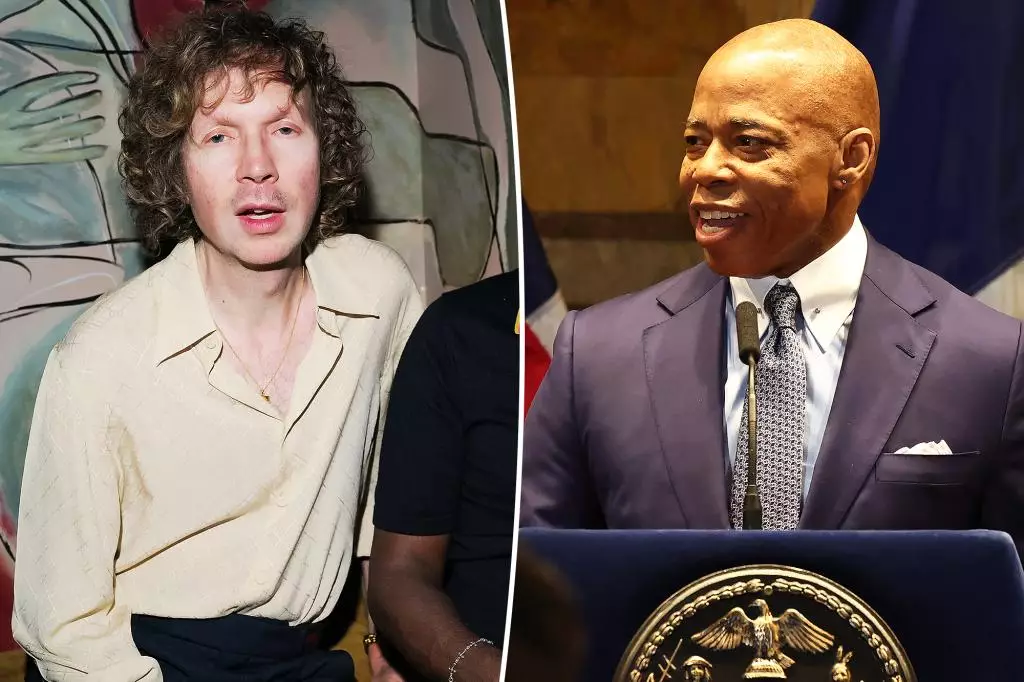After a brief hiatus from the public sphere that sparked curiosity, Mayor Eric Adams has made a dramatic return to New York City’s vibrant nightlife. His reemergence comes after a mysterious illness that rendered him largely absent from the spotlight in late January. Contrary to expectations of followers who anticipated him to frequent his usual high-profile venues, such as Zero Bond or Casa Cipriani, Adams opted for a less conventional choice. He made his entrance at The Mulberry, an upscale bar in Nolita that has quickly become a favorite among celebrities.
The Mulberry has garnered attention for its elegant ambiance and trendy cocktail offerings, attracting a plethora of A-list guests including Brad Pitt and Taylor Swift. In stark contrast to the predictability of his past haunts, the mayor’s decision to mingle among the celebrity set at The Mulberry symbolizes not just a personal choice, but potentially a strategic move to align himself with the creative elites of the city. Witnesses report that Adams was in high spirits, engaging with patrons, flashing his trademark “big smile,” and exchanging pleasantries as he mingled at the establishment’s bar.
Network and Influence: The Power of Nightlife
Adams’ appearance at The Mulberry does more than just highlight the mayor’s social calendar; it underscores the intricate relationship between public figures and the nightlife industry. New York City is famed for its nightlife culture, which serves as a breeding ground for networking and influence. By positioning himself in trendy venues, Adams seeks to solidify his standing within influential circles—an essential aspect of governance in a city where nightlife and culture often intertwine.
Such strategic engagements are not merely personal reprieves from the pressures of politics; they also serve as platforms for building connections with industry leaders and celebrities who shape public sentiment and culture. The optics of his presence alongside recognized figures like Beck, who was also at The Mulberry the same evening, enhance Adams’ visibility while aligning him with contemporary social movements relevant to artists and entertainers.
The Implications of Celebrity Engagement
While engaging with celebrities can lend a sense of modernity to his office, there are risks involved. Critics may argue that focusing too heavily on nightlife and celebrity culture could detract from the serious governance issues facing New Yorkers. However, Adams’ administration seems to be banking on the notion that fostering a contemporary image is vital for keeping pace with the city’s fast-evolving landscape.
Adding to the intrigue, Beck himself announced an upcoming solo performance—an event that further blurs the lines between art and politics. As Adams mingles with this elite artist community, he cans harness their influence to advance initiatives that resonate with younger demographics and dynamic cultural movements.
In sum, Mayor Eric Adams’ foray back into the nightlife scene at The Mulberry reflects not only a personal comeback but also a conscious effort to navigate the complexities of urban leadership. Engaging with the celebrity culture of New York embodies a double-edged sword; it presents both opportunities for enhancing his public persona and possible distractions from the pressing issues of his constituents. As the mayor gears up for further public appearances, the balance between revelry and responsibility will undoubtedly continue to shape his tenure in office.
